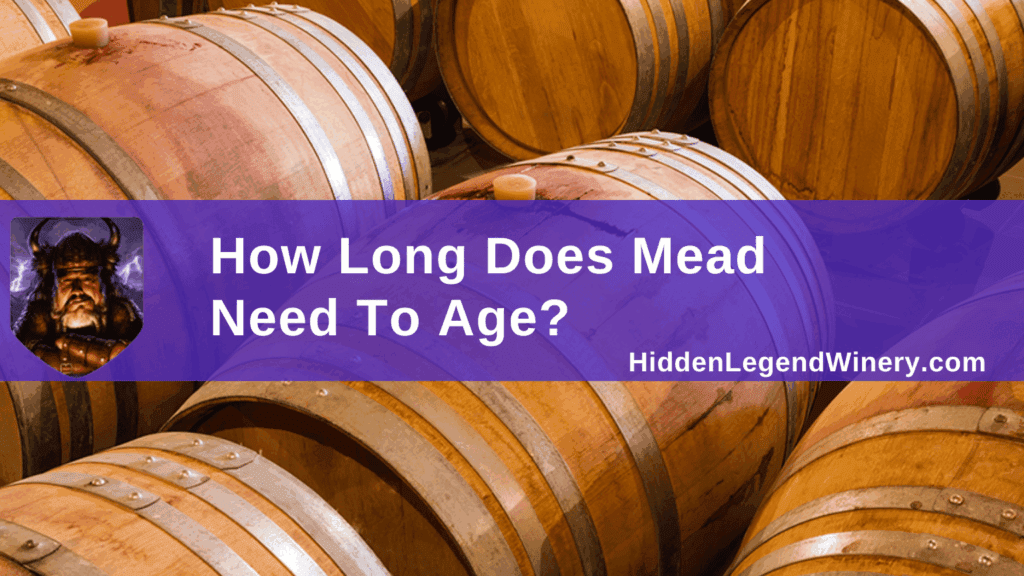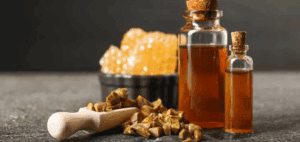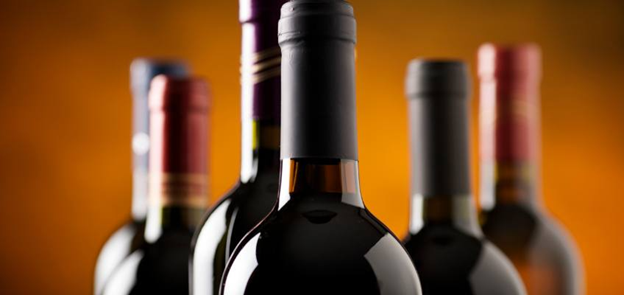
How Long Should Mead Age? Complete Aging Time Guide
Mead improves in flavor as it ages, developing smoother texture, richer aroma, and balanced sweetness over time. Most meads benefit from at least 3 to 6 months of aging, while some premium or traditional styles reach their best character after 12 months or more. The right aging time depends on the honey used, fermentation conditions, yeast behavior, and the desired flavor profile.
When you first taste a young honey wine, you might wonder why mead makers across the world preach patience above all else. The answer lies in the magical transformation that occurs during the aging process—a journey that can turn a harsh, youthful beverage into liquid poetry. Understanding how long mead needs to age isn’t just about waiting; it’s about discovering the perfect moment when time, honey, and craftsmanship converge to create something truly legendary.
At Hidden Legend Winery, nestled in the Montana wilderness where our founder Ken Schultz first dreamed of capturing the essence of ancient traditions, we’ve learned that mead aging is both an art and a science. From our early days experimenting with what is mead made from to perfecting our award-winning varieties, we’ve discovered that the question isn’t simply how long to age mead—it’s about understanding what happens during those crucial months and years that transform simple honey wine into something extraordinary.
Key Takeaways: Ideal Mead Aging Timelines and Flavor Impact
- Most meads need 6 months to 2 years of aging, with fruit and spiced varieties typically requiring 12-18 months for optimal flavor integration
• Proper storage at 55-65°F in dark, stable conditions is crucial for successful aging
• Traditional meads often age faster than fruit or spiced varieties due to their simpler composition
• Bottle aging provides more consistent results than bulk aging for most home and small-scale producers
Ready to Taste Fully Aged Mead? What to Expect in Flavor
Why wait years to discover the magic of properly aged honey wine? Our master mead makers have already done the patient work for you, crafting award-winning meads that showcase the perfect balance only time can create. From traditional varieties that highlight pure Montana honey to complex fruit meads featuring local chokecherries and huckleberries, each bottle represents years of careful aging and generations of mead-making wisdom.
Explore our complete collection of perfectly aged meads and discover why patience truly makes the finest honey wine.
Mead Aging Basics: Why Time Changes Flavor and Aroma
Mead aging is a complex process where time works its magic on the fundamental components of honey wine. Unlike grape wine, which often follows predictable aging patterns, mead typically requires its own unique timeline that depends on several key factors working together in harmony.
What Happens During the Aging Process
During aging mead, several chemical processes occur simultaneously. The harsh flavors that characterize young honey wine gradually mellow as alcohol molecules bind with various compounds, creating smoother, more complex taste profiles. Flavor development continues as residual sugar integrates with other components, while any remaining yeast slowly settles, clarifying the mead naturally.
The aging process also allows the honey’s natural characteristics to emerge more prominently. Where young mead might taste predominantly of alcohol or exhibit sharp edges, properly aged mead reveals the subtle floral notes, regional terroir, and delicate sweetness that make each variety unique.
Factors That Influence Aging Time
Several variables determine how long your mead needs to mature. High alcohol meads generally require longer aging periods—sometimes up to two years or more—as the elevated alcohol content needs additional time to integrate smoothly. The honey source also plays a crucial role; darker, more robust honeys often benefit from extended aging, while lighter varieties might reach peak quality sooner.
Temperature, humidity, and storage conditions significantly impact the timeline. Consistent, cool temperatures promote steady, even aging, while temperature fluctuations can stress the mead and extend the required aging period.
How Long to Age Different Mead Styles (Dry, Sweet, Melomel, etc.)
Different mead varieties require tailored approaches to aging, much like the diverse collection we craft here in Montana’s pristine environment.
Traditional Meads and Aging Requirements
Traditional meads, made purely from honey, water, and yeast, typically need six months to two years of aging. These pure expressions of honey wine showcase the raw beauty of their ingredients, but they need time to reach their full potential. Our traditional mead collection represents years of perfecting this patience-rewarding process.
The simplicity of traditional meads means every component must achieve perfect balance. Young traditional meads often exhibit alcoholic heat or honey sweetness that needs time to integrate. After proper aging, these meads reveal complex flavor layers that speak to both the honey’s origin and the mead maker’s skill.
Fruit Meads: Patience Pays Off
Fruit meads present unique aging challenges and rewards. The natural acids and sugars from fruits interact with honey and alcohol in complex ways, often requiring 12 to 18 months for optimal integration. Our Montana-grown chokecherries and wild huckleberries create fruit mead varieties that exemplify this patient process.
The aging timeline for fruit meads depends heavily on the fruit type. Tart fruits like our wild chokecherries need extended aging to allow their natural acids to mellow and merge with honey sweetness. Sweeter fruits might reach peak quality somewhat sooner, but still benefit from substantial aging periods.
Spiced Meads and Their Unique Timeline
Spiced meads require careful consideration during aging, as spices can either intensify or diminish over time. Generally, spiced meads need eight months to two years, depending on the spice intensity and combination. Some warming spices become more prominent with age, while others fade, requiring mead makers to anticipate these changes during production.
The key with spiced meads lies in understanding how each spice component evolves. What might seem perfectly balanced in a young spiced mead could become overpowering or underwhelming after extended aging.
Bottle Aging vs. Bulk Aging: Which Method Produces Better Results?
Choosing between bottle aging and bulk aging significantly impacts both timeline and final character. Understanding when to use each method helps optimize your mead’s development.
The Benefits of Bottle Aging
Bottle aging offers several advantages for mead development. Once sealed, mead continues evolving in a controlled environment where oxidation occurs extremely slowly. This method allows for gradual flavor development while preserving the mead’s intended character. For home mead makers working with a glass carboy, transitioning to bottle aging at the right moment becomes crucial for optimal results.
The smaller volume in bottles also means more consistent aging across your batch. Each bottle develops uniformly, ensuring that when you open one after months or years, you’ll experience the mead exactly as intended. Proper storage techniques become essential during this phase.
When to Consider Bulk Aging
Bulk aging works well for large batches where you want to monitor and potentially adjust the mead during development. This method allows for periodic tasting, racking to remove sediment, and making subtle corrections before final bottling. Professional meaderies often use bulk aging for consistent product development.
However, bulk aging requires more attention and proper storage facilities. The larger volume means temperature control becomes more critical, and the risk of contamination increases with each handling.
How to Store Mead Properly During the Aging Process
Storing mead correctly during aging determines whether your patience results in liquid gold or disappointment. The environment you create directly impacts flavor development and overall quality.
Creating the Ideal Environment
Consistent temperature between 55-65°F provides optimal aging conditions. Avoid temperature fluctuations, which stress the mead and can create off-flavors. Darkness prevents light damage, while proper humidity levels prevent cork issues. Keep corks moist if using natural cork closures, as dried corks allow unwanted oxygen exposure.
Proper positioning also matters. Store bottles on their sides to keep corks moist, or upright if using synthetic closures. Avoid vibrations from appliances or foot traffic, as movement can disturb sediment and interrupt the aging process.
How Storage Affects Flavor Development
Poor storage conditions can ruin even the finest mead. Excessive heat accelerates aging unpredictably, often creating harsh flavors and reducing complexity. Cold temperatures slow development too much, extending aging times unnecessarily. Light exposure, particularly sunlight, breaks down delicate flavor compounds and can create unpleasant tastes.
Proper storage allows natural chemical processes to proceed at their intended pace. The slow integration of flavors, gradual oxidation through cork closure, and natural clarification all depend on stable, appropriate storage conditions.
How to Tell When Your Mead Is Fully Aged and Ready to Drink
Recognizing when your mead has reached optimal maturity requires understanding both sensory indicators and timeline expectations.
Tasting for Optimal Maturity
Well-aged mead exhibits smooth alcohol integration without harsh bite or burning sensation. The honey character emerges clearly but doesn’t dominate other flavors. Any fruit or spice additions should taste integrated rather than separate or overpowering. The overall impression should be balanced, complex, and pleasant from first sip to finish.
Young mead often tastes “hot” from alcohol, overly sweet from residual sugar, or harsh from incomplete fermentation byproducts. As aging progresses, these characteristics mellow and merge into harmonious complexity.
Understanding Shelf Life and Peak Quality
Most meads reach peak quality within two to five years, though this varies significantly by style and production methods. Unlike grape wine, mead doesn’t always improve indefinitely with age. Many meads hit their peak and maintain that quality for several years before gradually declining.
Higher alcohol meads generally have longer shelf life and aging potential. Lower alcohol varieties might peak sooner but can still maintain quality for years when properly stored. Understanding your specific mead’s characteristics helps determine optimal consumption timing.
Mead Aging FAQs
How do mead makers determine optimal aging time?
Many mead makers rely on regular tasting throughout the aging process, tracking how flavors develop and integrate over time. Professional mead makers often maintain detailed notes about each batch, recording monthly tastings to identify peak quality windows for different styles.
What role does yeast nutrient play in aging requirements?
Proper yeast nutrition during fermentation significantly impacts aging needs. Well-nourished yeast produces fewer harsh congeners and byproducts, meaning the mead requires less aging to reach optimal quality. Poor yeast nutrition can significantly extend the aging requirements.
How does making mead at home affect aging timelines?
Home mead making often requires longer aging periods due to less controlled fermentation conditions and equipment limitations. Commercial operations maintain precise temperature control and use professional-grade ingredients, potentially reducing aging requirements compared to home production methods.
Can you age mead in a glass carboy indefinitely?
While glass carboy storage works well for aging, extended periods increase risks of contamination and oxidation. Most mead makers transfer to bottles after several months of bulk aging, as the smaller volume provides more stable aging conditions.
Why do grape wine and mead age differently?
Grape wine contains tannins and acids that interact differently with time compared to honey wine. Mead’s simpler composition means fewer compounds driving aging changes, but the honey’s complex sugars and proteins create unique aging dynamics not found in grape wine.
How do you keep a cork moist during long aging periods?
Store bottles horizontally so the mead contacts the cork, preventing it from drying out. Check storage humidity levels periodically, maintaining 70-75% humidity when possible. Dried corks allow excessive oxygen exposure, potentially ruining aged mead.
How Long Should Mead Age? Complete Aging Time Guide
Best Yeast for Mead: Top Strains Compared
How Long Does It Take to Make Mead?




